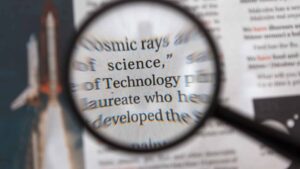Researchers have many different funding mechanisms in the EU, but who is eligible and what is the process? Can seed companies participate in programmes like Horizon Europe and what are the conditions? Is it worth my time to put together a consortium and are there any tricks?
The answer to these questions is “Yes” and “Yes, but…”.
The main European research funding mechanism is the Framework Programme managed mostly by the Research Executive Agency (originating from DG Research and Innovation). The programmes run on six-year budgets with the present one, Horizon Europe, starting in 2021. That followed from Horizon 2020, FP7, FP6… The present budget for Horizon Europe is €95.5 billion.

Each programme has unique mechanisms and objectives (called pillars or actions) but the work packages change every year (voted through the European Parliament) which releases a budget that is then divided into a series of annual calls. If you wonder why your field of research rarely has calls but other areas like organic seed development or agroecology research have multiple calls, this is likely because certain groups lobbied their MEPs to earmark a certain budget in the annual work packages to reflect their interests. That should be easy to secure if your research reflects many of the broader agricultural themes touching on biodiversity, climate and resilience issues.
Can Industry Participate?
Within Horizon Europe, there are certain calls designed to help SMEs develop capacity and networks. Larger companies can work within consortiums (often with limits of public funding related to their own contributions). There are also large infrastructure research calls which rely on cooperation between companies and research institutions as well as co-funding schemes to develop larger networks (usually with 50 per cent own contributions). One of the objectives in Horizon Europe is to promote industrial competitiveness.
Companies can also sponsor doctoral students or post-docs within the Marie Skłodowska-Curie funding mechanisms (usually with an associated university). Most of these programmes are open to non-European-based companies as well, but with certain conditions related to ethics, data protection and political issues.
Tips and Tricks
While EU funding is designated toward creating a stronger, more innovative European research capacity, I believe one of the key achievements of the framework programmes is the development of wider, pan-European networks exchanging a multi-disciplinary, multi-cultural cross-fertilisation. If your proposal only gathers research organisations from a couple countries, the quality of the consortium would likely be considered as weak. Proposals are also expected to include experts in communications, ethics and social issues.
Writing an EU proposal is a long, tedious process that includes input from a large number of members (who may be involved in other consortia for the same call). Unsurprisingly, there are consultants who specialise only in writing EU proposals (and are often remunerated by having a lucrative, passive role in the consortium management if they succeed). There are also small project management organisations that excel in coordinating consortia to ensure that the deliverables are met and that the project succeeds throughout the three-to-five-year project lifespan. A clear sign of success is when the same consortium applies for further funding in a later call to continue their research.
What Makes a Project Proposal Succeed?
The calls are often very specific in what they expect. Clever ideas that don’t relate to the proposal will lose points in the scoring. Evaluators follow a certain ranking system (often outlined in the call for proposals) but more and more over the last two programmes, “impact” outweighs heavily in the evaluation process. Will your research lead to innovative products and businesses? Will it continue beyond the project funding period? Are you bringing together top researchers from well-known institutions to address serious problems while developing a future generation of researchers? Will it help restore biodiversity or reduce carbon emissions?
The quality of the consortium is important. Do you have a good mix of leading researchers from different, well-known institutions across Europe? Proposals are evaluated by peers specialised in the field who can easily spot this. Is the management sound, with an appropriate number of boards and committees providing the necessary oversight? Is the budget reasonable and justified?
There are other issues sadly overlooked in many proposals which can lead to costly amendments added later to any grant agreement. Did your proposal include a structure for research ethics oversight? Did it include gender balance?
So, Should I Bother?
The final question for any seed research company would be: Is applying worth my time and energy? This depends on your objectives. From a networking perspective, the EU framework programmes offer the best means to be exposed to a wide range of researchers and post-docs from across Europe. Many of these bright minds might just become future colleagues in your company.
But, and this is a sad criticism of the programme structure, the best ideas often develop outside of the project objectives or after it times out at M36 or M48. Companies might decide to fund further research themselves.
In short, the European Commission offers an excellent opportunity for research cross-fertilisation and innovative networks that the corporate world rarely taps into.
Read More from the November Issue:












